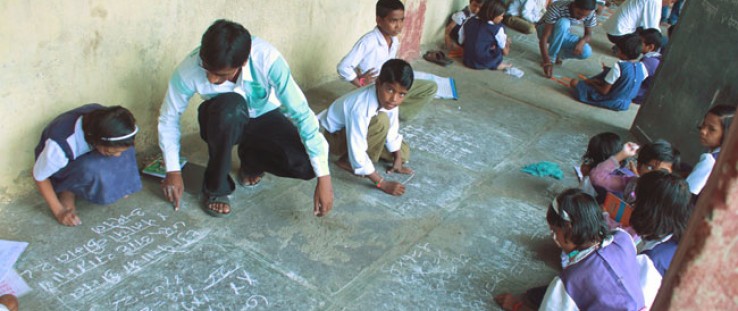 Indian children at one of Pratham Education’s “learning camps.”
Pratham Education Foundation
Indian children at one of Pratham Education’s “learning camps.”
Pratham Education Foundation
 Indian children at one of Pratham Education’s “learning camps.”
Pratham Education Foundation
Indian children at one of Pratham Education’s “learning camps.”
Pratham Education Foundation
Pratham Education Foundation's Learning Camps
Country: India (state of Maharashtra)
Grant Amount: $300,000
Mission: To expand an accelerated learning approach that combines doing, speaking, reading and writing for 18,000 Indian children.
At 8 a.m. in the Indian state of Bihar, 25 children gather in a playing field. A bright yellow banner bearing the Pratham Education Foundation’s logo is prominently rolled out at the site, drawing curious onlookers. A volunteer listens to each child read and uses a simple assessment tool to group children into five levels according to their ability. Over the next six days, the children will participate in structured reading activities and slowly learn to recognize sounds, letters and words.
This group of children is taking part in one of Pratham’s Read India program “learning camps,” which reached close to 2 million children across 17 Indian states in 2011 and 2012. As many as 61,000 volunteers and 52,000 government teachers were trained in the Pratham methodology, which combines speaking, reading and writing in each learning activity so that competencies develop simultaneously.
The Pratham Read India model is unique for a number of reasons. The learning camps, which run for five to 10 days at a stretch, group children according to their current reading achievement level, rather than their school grade or age. Thus, teachers do not have to parcel out their time and attention to children at different levels.
“Designing instructional approaches based on children’s skill level rather than age or grade is essential for helping children break through to reading,” says Penelope Bender, a USAID senior basic education adviser.
Equally important, the model’s simple program can be implemented by less experienced teachers and citizen volunteers from the community. Teachers and students focus on a well-defined, short-term goal that can be achieved before students move to the next level.
Pratham also employs a community approach to annual education assessments in India. Pratham’s Annual Status of Education Report (ASER, or “impact” in Hindi), the largest household survey of children conducted in India each year, engages ordinary citizens, through local organizations, to assess reading and arithmetic skills across most of India’s 640 districts for students between the ages of 5 and 16. By quantifying India’s literacy problem, Pratham has been able to play a lead role in advocating for change at the national, state, district and village levels.
In September, Pratham received a $300,000 USAID grant as one of 32 winners of the multi-donor All Children Reading Grand Challenge for Development. The award will help scale up Pratham’s Read India efforts in 300 villages in the state of Maharashtra and will also be used to modify the foundation’s assessment instrument to measure advanced reading skills.
From the Slums of Mumbai
Pratham was founded in Mumbai in 1994 to improve educational opportunities for children in Mumbai City who were often left out of India’s education system altogether, or who were in school but lagging behind academically. Pratham developed innovative approaches to providing quality education to the underprivileged.
One such experiment was to recruit balsakhis (or children’s friends) in about 200 public primary schools in the cities of Vadodara (formerly Baroda, in the state of Gujarat) and Mumbai (state of Maharashtra) to work with students who had fallen behind in reading and math. The instruction proved effective: Grade 4 literacy improved, and the children farthest behind benefited the most.
Since 1994, India has made substantial strides towards achieving “Education for All,” the government’s vow, formalized in the Right to Education Law in 2010, that every child has a right to free formal schooling.
Today, more than 95 percent of India’s children between the ages of 6 and 14 are in school. Billions of dollars have been invested by the federal and state governments to build classrooms, recruit teachers, provide school lunches and buy books.
Still, learning levels remain low in rural government primary schools, and are only slightly better in most private schools. The 2010 ASER showed that only half of grade 5 students were able to read a grade 2 text. Half of the children tested were three grades behind.
Finding Sustainable Learning Approaches
With USAID funding, Pratham will continue to develop its cycle-of-learning camps, interspersed throughout the school year. The camps will use volunteers, working side by side with teachers, to help groups of 40 to 60 children at similar skill levels move to the next level at a targeted annual cost of around $4 per child. The Government of India currently spends approximately $125 per child per year on education.
Pratham will also modify the ASER instrument to measure more advanced reading goals.
“Pratham’s tool has been crucial to pinpoint the depth of India’s literacy problem,” says Pratham Program Director Rukmini Banerji. “As more children attend schools and begin to learn to read, it is important to continually refine this tool to measure advanced reading goals. Measurement also means engagement—in understanding the situation and figuring out what to do next.”
USAID experts believe Pratham may have hit upon a method that can be adapted to improve struggling young learners throughout the globe.
“Learning from Pratham’s experience has been key to our efforts in improving reading skills worldwide,” notes Bender. “Simple but direct instructional approaches focused on reading skills; well-supported teachers and volunteers; and ample, low-cost reading materials can lead to improved reading gains rapidly and at scale.”
MIT’s Abdul Latif Jameel Poverty Action Lab (J-PAL)—an institution known for its data-driven program analysis—has conducted a number of rigorous evaluations that also validate Pratham’s methodology. One evaluation found that when low-performing children were taught in a reading-focused camp model for about a month during vacations, with teaching aligned to their skill level, not only did their learning improve significantly, but they retained these gains for at least two years.
This same evaluation showed that although government teachers were able to effectively help children in the summer camps, these same teachers made no difference during the school year, and “remained locked in the age-grade-curriculum-textbook deadlock,” says Banerji. “This suggests that if you place teachers in the right environment, students learn.”
But it also begs the question: “How does one transfer such impact of the learning camps to the classroom?”
Scholars argue that India’s struggles to educate its young may stem from a cultural mindset that focuses on “toppers”—the high achievers who go on to professional careers or a government job. Abhijit Banerjee, the MIT economist who authored the much-lauded Poor Economics, described his theory of “irrational elitism” in a 2011 article in Hindustan Times: “Everyone in the system—teachers, parents or administrators—share the premise that education is not meant to benefit the average student in the average school. The goal of education, in this view, is to permit the most successful students to get through the difficult exams that get thrown at them and hit the jackpot of a government job or a place in an engineering school. The rest, unavoidably, will just drop out.”
But this belief is unfounded, Banerjee says. More and better education benefits all—from the bureaucrat to the shopkeeper to the farmer.
Pratham’s mission to get “every child in school and learning well” is one effort to change this mindset. “India is at a critical time,” says Pratham founder and CEO Madhav Chavan. “Getting Indian children to learn is an uphill battle, but there is no more important battle to fight. Focusing on reading and simple arithmetic is a pathway to life-long learning. Through the All Children Reading grant, we will continue to … experiment, evaluate and reflect on what works.”







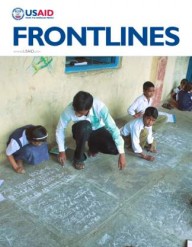

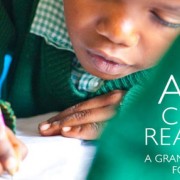
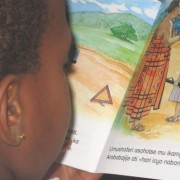
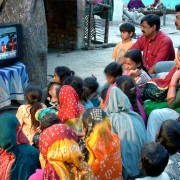
Comment
Make a general inquiry or suggest an improvement.